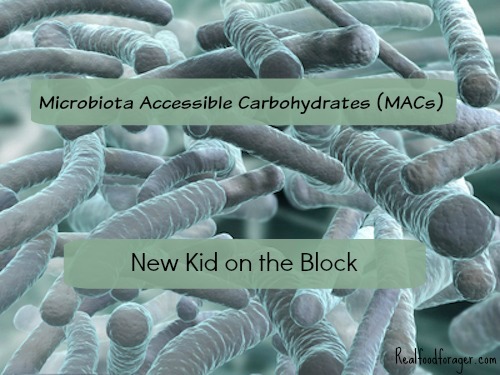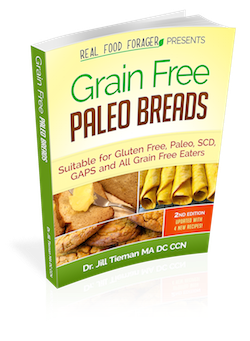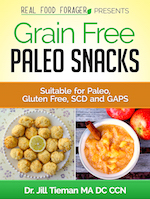MACs. It’s the newest term being used lately to describe the best way to feed your microbiome. Two researchers, Drs. Justin and Erica Sonnenburg out of Stanford University have published a new book called The Good Gut, that explains what they have found.
The Drs. Sonnenburg also published an article in Cell Metabolism called, Starving our Microbial Self: The Deleterious Consequences of a Diet Deficient in Microbiota-Accessible Carbohydrates, in 2014, that describes some of their research.
According to the Drs. Sonnenburg, the microbiota is central to how one is predisposed to disease. The study of different indigenous populations tells us that the western microbiome has much less diversity and may be the root cause of the various diseases of civilization.
Traditional cultures consume much more fiber and have other lifestyle factors that support their microbiome.
It’s becoming clear that just because someone appears to be “healthy” that doesn’t mean that their gut microbiome is healthy. When we look at indigenous peoples who still eat their traditional diets, we see how different the microbiome is and we can see what ours is missing.
What to Eat
Tubers are very common to the hunter/gatherer – but these are wild tubers (sadly, we have breed certain characteristics out of these plants to make them more palatable). We do not have access to these wild tubers but we can eat the tubers that are available to us and other vegetables so that we can hope to recreate the fiber content.
The Drs. Sonnenburg advise us to eat more plants that have complex fibers – not potatoes, rice or refined flour – but foods that have a lot of roughage, like vegetables, fruits and legumes.
In her Butyrate Series, Terri Fites, MD tells us,
- Some fiber, like cellulose (think of the stems of broccoli and the peel of an apple), gets fermented very little and very slowly. Other fiber, like inulin (think onions) gets fermented very completely and very rapidly.
- Each vegetable or fruit will contain several types of fiber, not just one type. Broccoli is not ONLY cellulose! Each vegetable or fruit has its own complex fiber identity! Find some that you tolerate.
- I think to optimize butyrate production throughout the entire colon, it is good to eat a mix of vegetables and fruits.
- Good bacteria can be cultivated. Drugs that cultivate good bacteria are called PREbiotics, but foods can do the same thing. Vegetables and fruits carry fibers that are prebiotic. By eating vegetables and fruits, you are not just allowing the bacteria you have to make butyrate, you’re actually promoting their growth. (source)
Unfortunately we don’t have a lot of studies that tell us which fibers are the best. We do know that if the microbiota are fermenting, they produce metabolic end products – short chain fatty acids (SCFA), like butyrate that are beneficial to us.
The highest concentration of butyrate is found in the colon. It’s produced by intestinal bacteria from indigestible carbohydrates (MACs) such as cellulose and pectin. This relationship — between the colonic bacteria and butyrate — has evolved to the extent that butyrate has become the primary source of energy of the colonocytes.
Butyrate Suppresses Inflammation in the Gut and Other Tissues
Butyrate also has potent anti-inflammatory and anti-cancer effects. This research suggests that using oral butyrate supplements and butyrate enemas may be used to treat inflammatory bowel diseases such as Crohn’s and ulcerative colitis successfully. Some investigators are also suggesting that inflammatory bowel disorders may be caused or exacerbated by a deficiency of butyrate.
Huh. Can this be part of the reason for the dramatic increase in inflammatory bowel disease and other autoimmune diseases in recent years? There is already evidence that the gut bacteria in patients with inflammatory bowel disease do not make butyrate, and that they have low levels of the fatty acid in their gut.
To take it further, we know that many, if not most, diseases originate in the gut and we know how important the proper balance of gut bacteria — the microbiome — is to health.
It’s All About Fiber
We know that our ancestors ate 50 – 200 gms of fiber a day. That is up to ten times more than most people eat today. When you don’t eat enough dietary fiber, the microbes are forced to consume the mucous membrane! This has the potential of being disastrous! Not only do you miss out on the beneficial byproducts of fermented fibers, it can also become inflammatory to the mucous membrane and potentially cause damage.
There is a lot of research that shows that the beneficial short chain fatty acids (SCFA – the byproducts of fermentation of fibers in the colon) regulate the immune system and the brain/gut axis in mice. These SCFAs are acetate, propionate – which regulates metabolism and Treg development – and as mentioned above, butyrate which also regulates Treg development. Tregs damper the immune response when appropriate and are very important is preventing over-activity of the immune system.
How To support Your Microbiome
It’s hard to recommend specific foods as this is individual issue. But here are some recommendations from Mary Ann Sanders at Gutmicrobiotaforhealth.com.
- Have as much diversity in your diet as possible
- Consume fermented foods. We know that they have at least a transient beneficial effect as they travel through the digestive tract
- Eat raw fruits and vegetables as these harbor environmental microbes (as tolerated)
- Consume probiotic foods and/or take supplements
- Consume adequate levels of diverse types of fiber, including prebiotics, to promote a diverse microbiome – MACs and resistant starch included
- When possible, breast feed your baby. Breast milk contains live microbes and a rich supply of oligosaccharides and immune factors that appear to support good bacteria in the baby’s gut
- Avoid elective caesarean births. If one is unavoidable, plan on swabbing the newborn with mom’s vaginal flora, as in a procedure being investigated by Maria Gloria Dominguez Bello
- Avoid unnecessary antibiotics
- Wash hands with soap and water instead of chemical soaps with antibacterials
- Live on a farm, or at least have a dog or cat. This seems especially beneficial for children if started when they are babies (source)
Try to maintain a highly diverse diet and eat seasonally. There is some data that shows that when primates eat seasonally, there is a large impact on the microbiota. In other words, as the seasons change, so does the microbiota.
As the research accumulates, we can learn about which foods are best to support a healthy microbiome as well as potential therapeutics.
Some of the information for this article came from an interview between Mike Mutzel and the Drs. Sonnenburg.
Get The Good Gut by Dr. Sonnenburg here.
Having been on the GAPS diet for years, we have transitioned to include some resistant starch and other fibers in order to feed the microbiota. Have you been on GAPS for a few years? Maybe it’s time to consider expanding your diet.
I am so glad these researchers are focused in on the microbiome. What about you? Are you as excited about this research as I am? Leave a comment and let me know!
Related Articles
- Gut Healing and the Ultimate Probiotic
- Why I’ve Added Resistant Starch to My Diet
- Take Back Your Butter — A little Known Component in Butter that has a Tremendous Impact on Your Health











